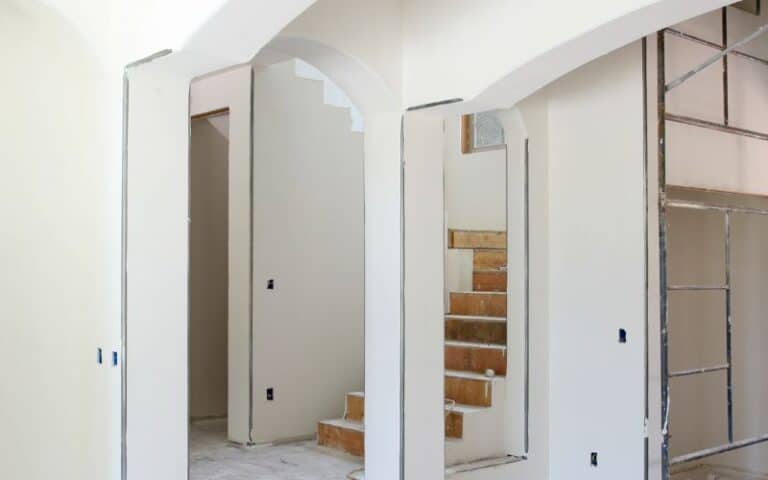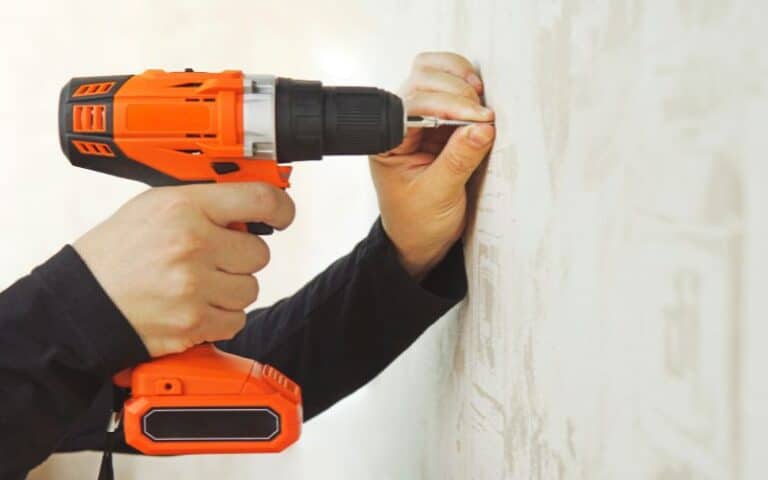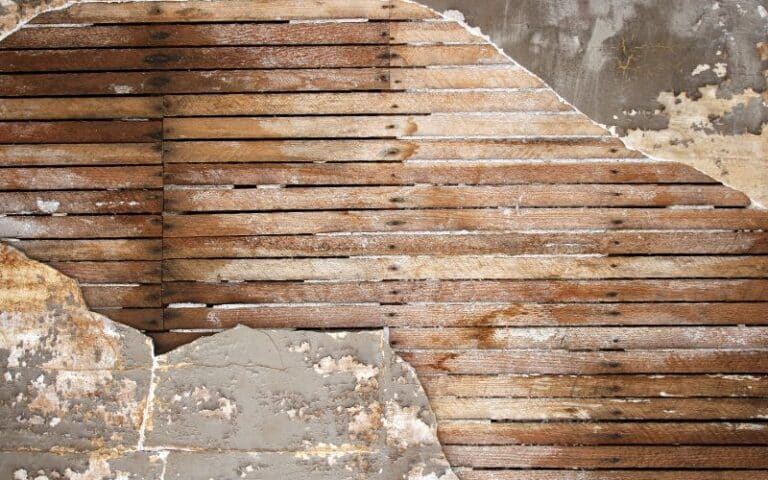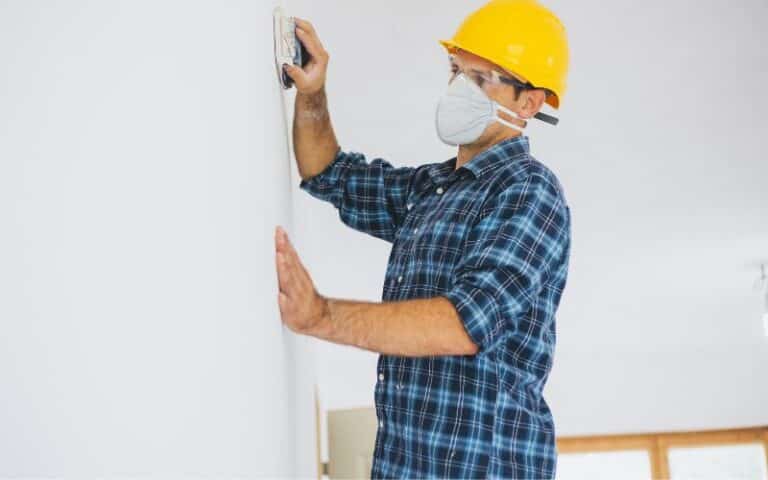Cold weather can affect the materials used in construction, and drywall is no exception.
Drywall is a popular material used to construct interior walls and ceilings but it is also somewhat delicate.
If you’re a homeowner or contractor, you may wonder if cold weather can cause the drywall to crack.
In this article, we’ll explore the impact of cold weather on drywall and what you can do to prevent it.
Yes, cold weather can cause drywall to crack. Drywall is a commonly used material in interior construction, but it is also susceptible to environmental factors such as temperature and humidity. Cold weather can cause drywall to contract, resulting in cracks or even gaps in the seams between the panels.
In this article, we’ll explore whether or not cold weather can cause drywall to crack and what steps you can take to prevent it from happening.
However, if you notice cracks in your drywall, you’ll also explore how to fix drywall cracks.
Ready for a Drywall Quiz?
Does Cold Make Drywall Crack?
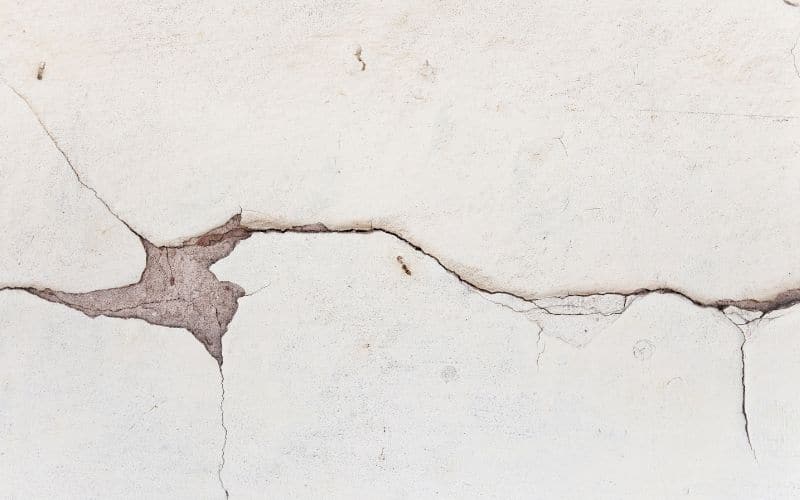
Cold weather can indeed cause drywall to crack. When the temperature drops, the moisture inside the drywall can freeze and expand, which puts pressure on the structure of the drywall.
If the drywall cannot handle this pressure, it can lead to cracks or even complete failure of the drywall.
The severity of the cracking can depend on various factors, such as the age and quality of the drywall. Temperature and duration of cold exposure are also determining factors.
In addition to causing cracks, cold weather can weaken the drywall’s structural integrity. This weakness makes it more prone to damage from other sources, such as water leaks.
While drywall is relatively sturdy, it can be prone to cracking or breaking, especially under certain conditions. One of these conditions is exposed to freezing temperatures.
When drywall is exposed to cold temperatures, the moisture within the gypsum can freeze and expand, causing the drywall to become brittle and susceptible to cracking.
The drywall is more exposed to weather damage if you do not seal the drywall properly.
Additionally, if the temperature fluctuates rapidly between warm and cold. Consequently, leading to stress on the material and potentially causes cracks.
It’s also important to note that while cold temperatures can contribute to drywall cracks, they are often not the sole cause.
Other factors, such as poor installation, structural issues, or excessive moisture, can also lead to cracking.
To prevent drywall from cracking in cold weather, it’s crucial to ensure proper installation and maintain a consistent temperature in the space.
You can achieve this by using insulation, sealing gaps and cracks, and maintaining a consistent temperature with heating systems.
How Much Cold Is Too Much for Drywall?
Generally, drywall can withstand cold temperatures up to about 50°F (-10°C) without cracking. However, temperatures below 55°F (12°C) can pose a risk of drywall damage.
Drywall is a porous material made of gypsum, water, and paper, and it is commonly used in construction to form walls and ceilings.
While it is a durable material, it is not invincible and can be susceptible to damage in certain conditions.
Cold temperatures can potentially affect drywall, causing it to become brittle and more prone to cracking.
The threshold for how cold is too much for drywall depends on various factors, including the humidity and moisture levels in the air.
When the temperature drops below freezing, the moisture in the drywall can freeze and expand, causing the drywall to crack or even crumble.
Below is a table showing temperature ranges and their effects on drywall.
| Temperature Range | Effects on Drywall |
|---|---|
| Above 55°F | Ideal temperature range for drywall installation and curing. |
| 40°F – 55°F | The acceptable temperature range for drywall installation and curing may require a longer curing time. |
| 25°F – 40°F | Drywall may become brittle and more prone to cracking. |
| Below 25°F | Drywall can freeze and damage, leading to cracking and other issues. |
Note that these temperature ranges are approximate and can vary depending on other factors such as humidity, ventilation, and the type of drywall used.
It’s always best to consult the manufacturer’s instructions for specific temperature recommendations.
However, it’s important to note that this temperature threshold is not an exact science and can vary depending on other factors.
For example, if the drywall is damaged or weakened, it may be more susceptible to cracking at higher temperatures.
Additionally, if the humidity in the air is high, even temperatures above freezing can cause damage to the drywall.
To protect drywall from cold temperatures, it is essential to ensure that the room is insulated and that the drywall is in good condition.
This protection can help prevent moisture from building up in the drywall and freezing, which can lead to cracking and other forms of damage.
It may be a good idea if you live in an area with particularly cold temperatures.
How to Fix Seasonal Drywall Crack Due to Cold?
When the cold weather arrives, it is not uncommon for homeowners to notice cracks in their drywall.
Drywall is a brittle material that can easily crack due to temperature changes and humidity fluctuations.
If you find a seasonal drywall crack due to cold weather, there are several steps you can take to fix it.
#1. Assess the Damage:
Check the severity of the crack. If it is a hairline crack, it can be fixed easily with a drywall compound.
However, if the crack extends through the entire thickness of the drywall, you must use a joint compound and drywall tape.
#2. Clean the Crack:
Clean the area around the crack with a dry cloth or a vacuum cleaner. Ensure no dust, debris, or loose drywall paper is around the crack.
#3. Apply Drywall Compound:
If the crack is small, apply a thin layer of drywall compound using a putty knife or a trowel. Let the compound dry completely before applying a second coat.
Repeat this process until the crack is filled.
#4. Use Drywall Tape:
If the crack is larger or extends through the entire drywall thickness, apply self-adhesive drywall tape over the crack.
Press the tape firmly into place with a putty knife or a trowel. Then apply a thin layer of joint compound over the tape.
Let the compound dry completely before applying a second coat. Repeat this process until the crack is filled.
#5. Sand and Paint:
Once the compound is completely dry, sand the area with sandpaper until it is smooth and level. Then apply primer and paint to match the surrounding wall.
What Is the Best Temperature for Drywall?
The ideal temperature range for installing drywall is between 50°F to 70°F (10°C to 21°C).
Temperatures outside this range can affect the drying and curing process, causing them to crack or not adhere properly.
High temperatures can cause the joint compound to dry too quickly, weakening the bond between the drywall sheets and the tape.
On the other hand, cold temperatures can slow the drying process, prolonging the joint compound’s cure time and causing cracking.
It’s also important to note that humidity levels can affect the installation and drying.
Ideally, the humidity should be around 50% to prevent the joint compound from drying out too quickly or taking too long to cure.
In addition to proper temperature and humidity levels, it’s important to ensure proper ventilation during the installation and drying.
This helps to prevent moisture buildup and allows the joint compound to cure evenly.
How to Keep Drywall From Getting too Cold?
Drywall can be susceptible to cracking and other damage if exposed to frigid temperatures for extended periods.
Therefore, taking precautions to keep drywall from getting too cold is important.
Here are some tips:
#1. Maintain a Consistent Indoor Temperature:
The best way to keep the drywall from getting too cold is to maintain a consistent indoor temperature.
This means keeping the heat on in the winter and ensuring the temperature doesn’t drop too low during the colder months.
#2. Use Insulation:
Insulating your walls and ceilings can help to regulate the temperature in your home and prevent the drywall from getting too cold.
#3. Seal Windows and Doors:
Cracks and gaps around windows and doors can allow cold air to seep in and cause the temperature in your home to drop.
Seal gaps or cracks with weather stripping or caulking to keep the cold air out.
#4. Consider Using a Space Heater:
If areas of your home are particularly prone to getting cold, consider using a space heater to keep the temperature from dropping too low.
#5. Keep Drywall Away From Exterior Walls:
Drywall installed on exterior walls is more prone to getting cold.
Try to keep drywall away from exterior walls or add extra insulation to keep the temperature more consistent.
By taking these steps, you can help to keep your drywall from getting too cold and prevent cracking and other damage.

